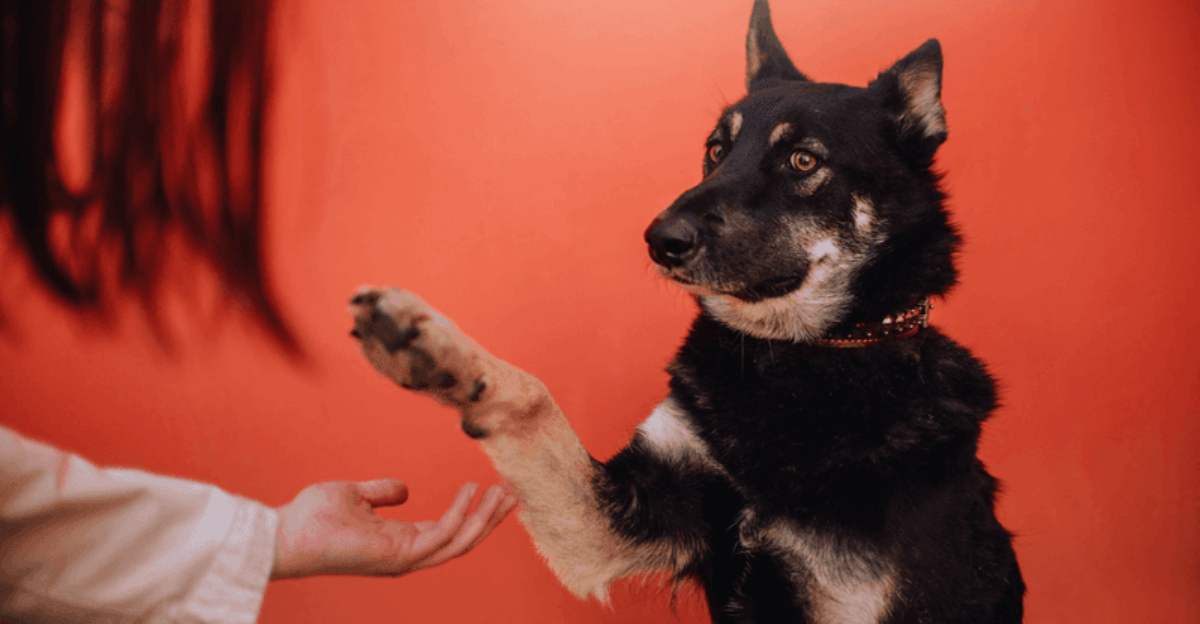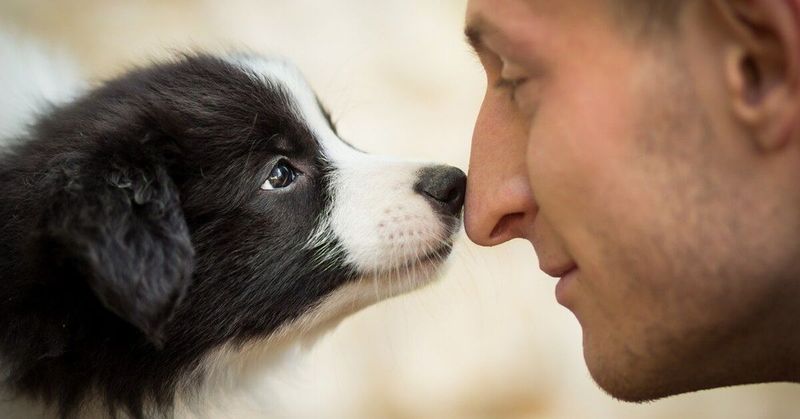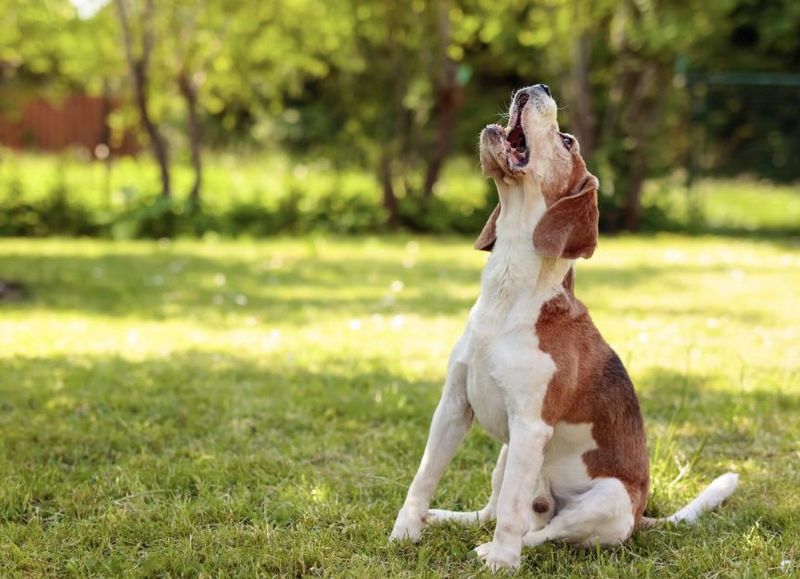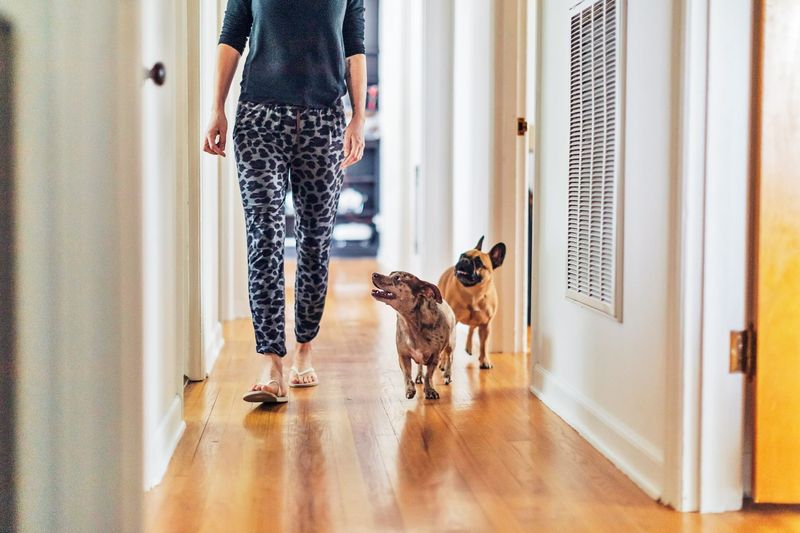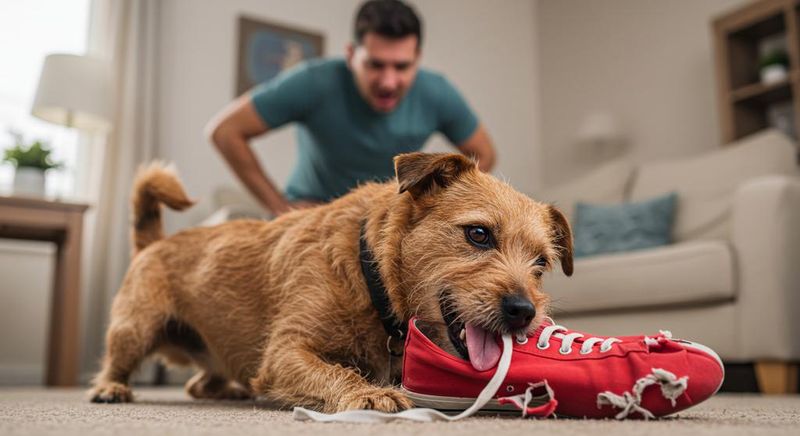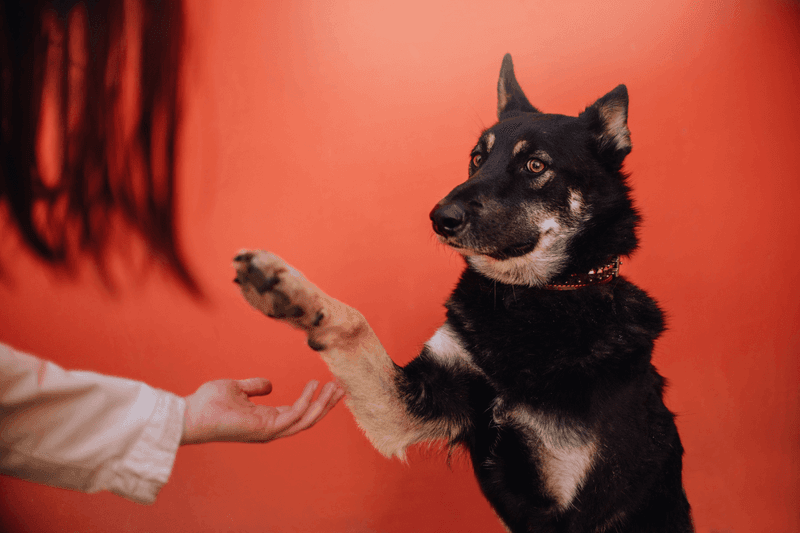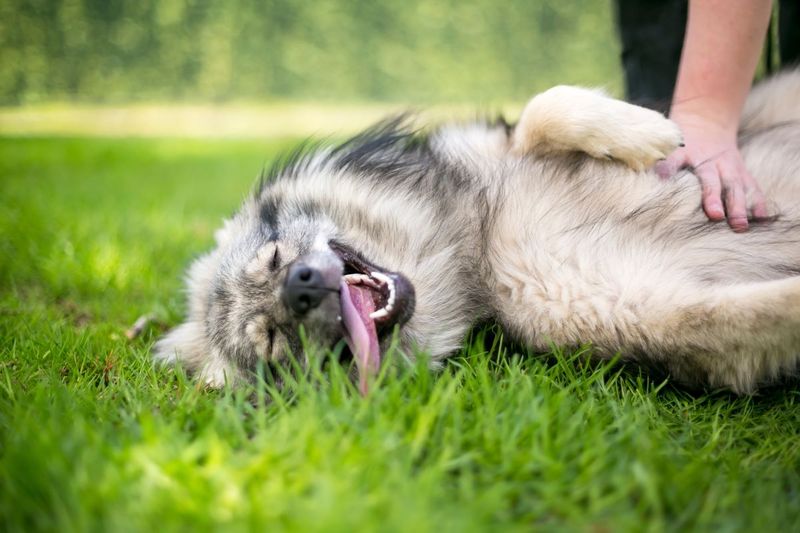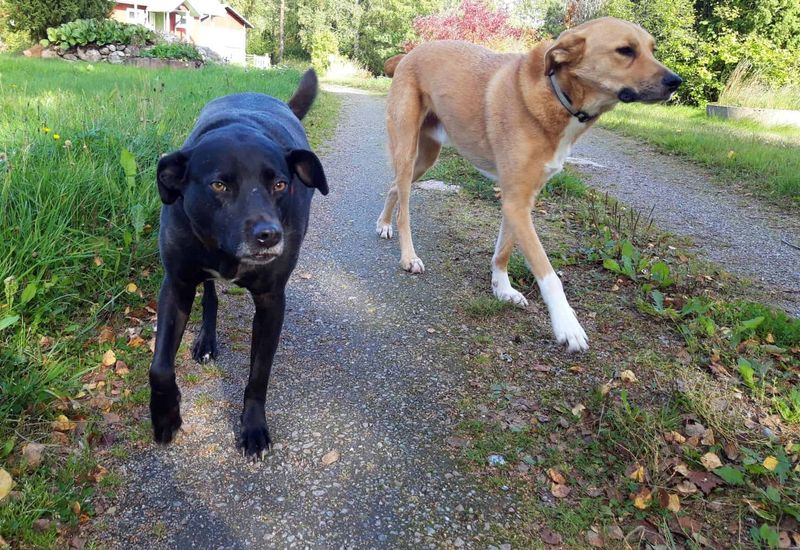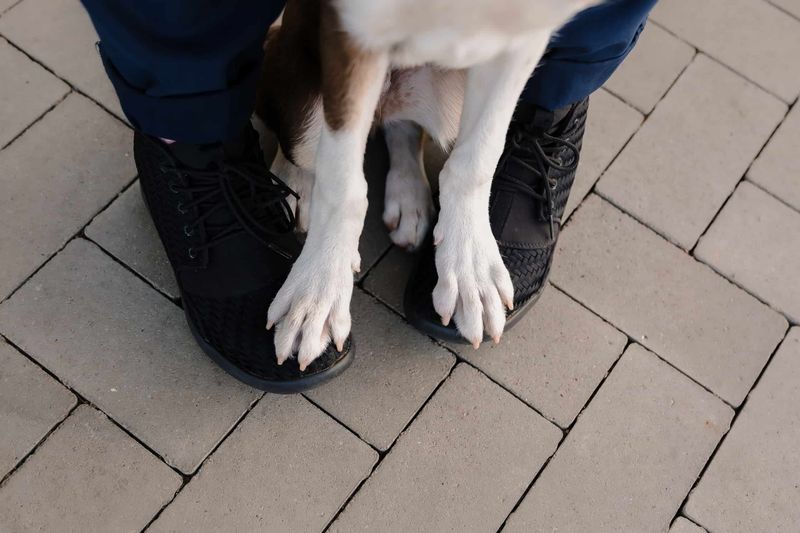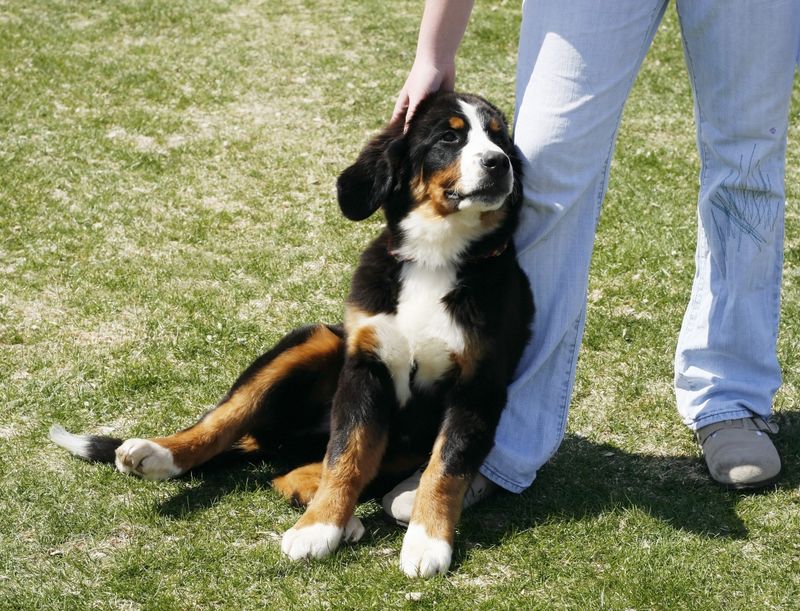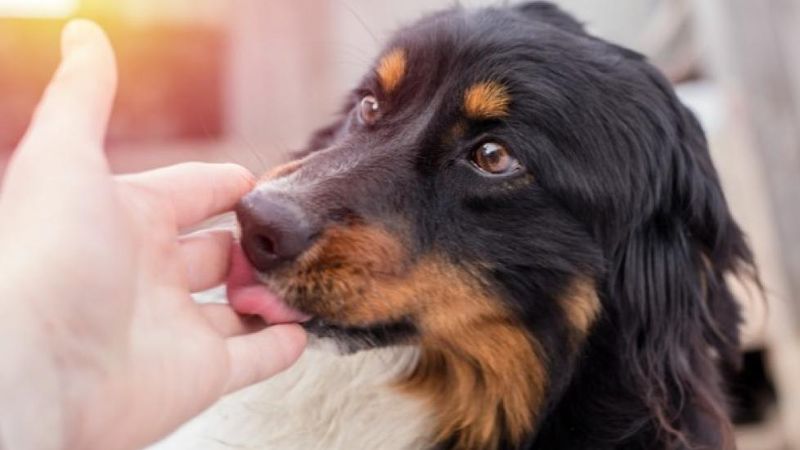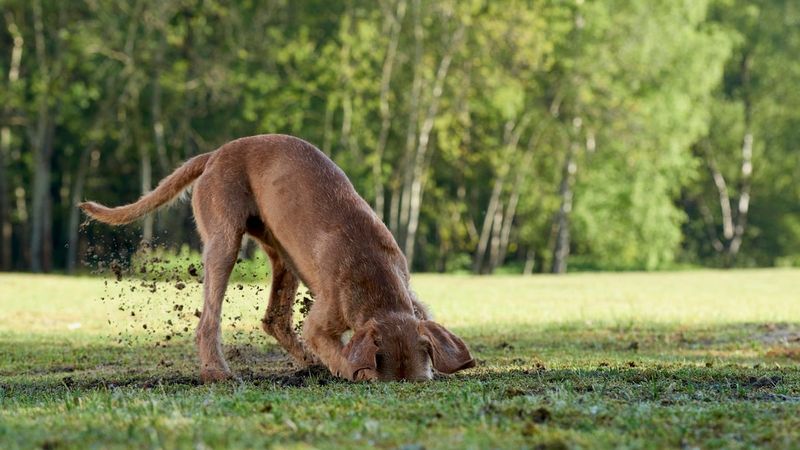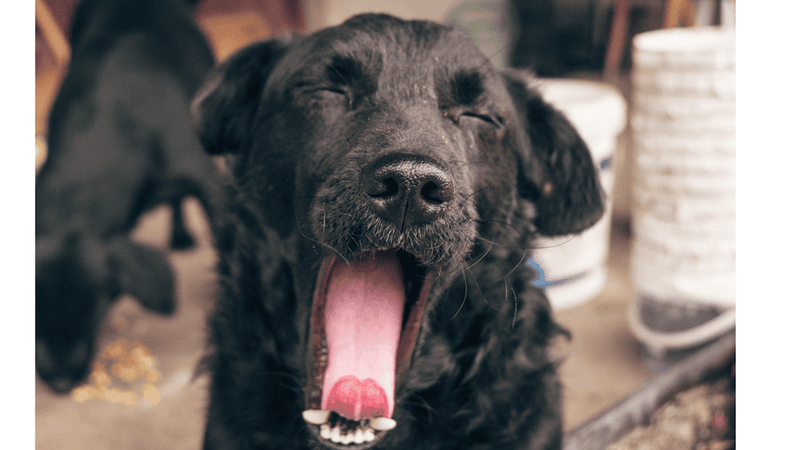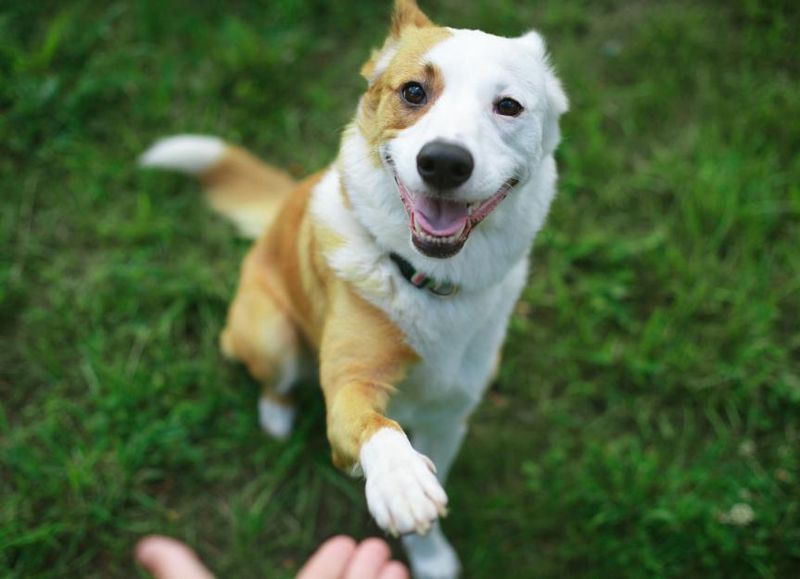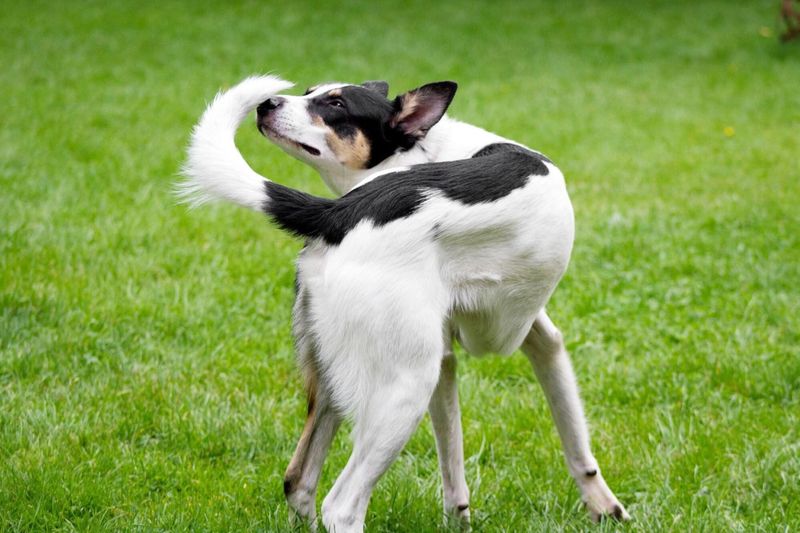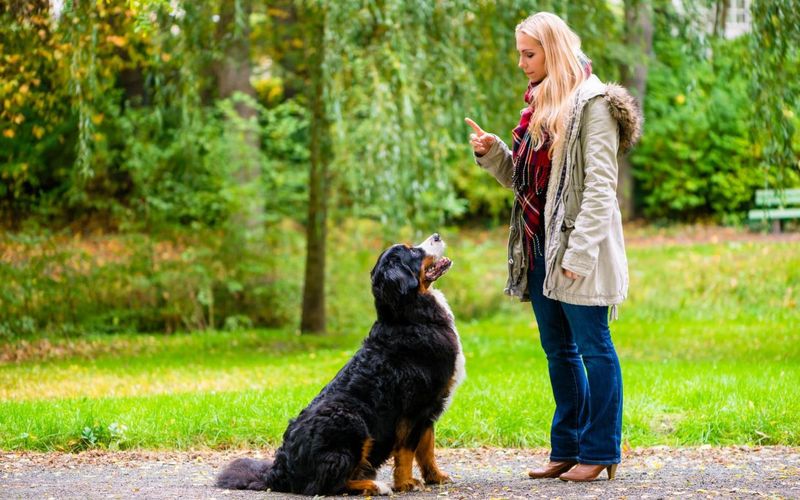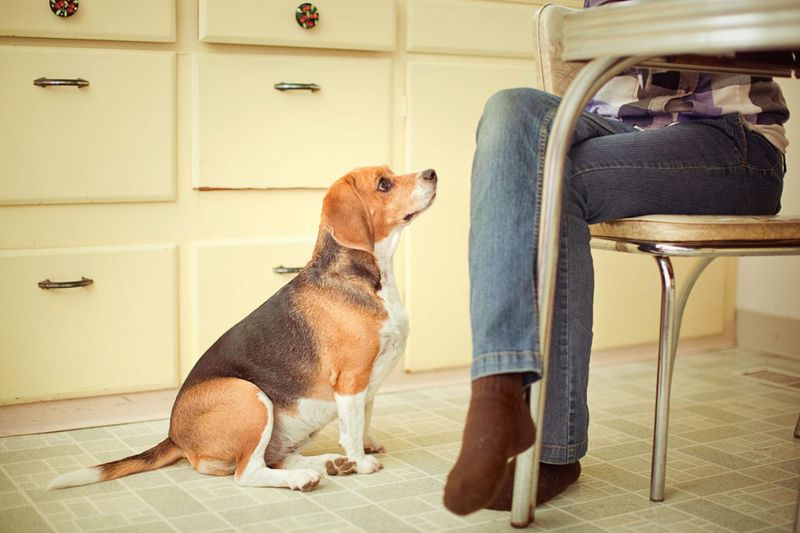Understanding your dog’s subtle cues for attention can strengthen the bond between you and your furry friend. Dogs have unique ways of expressing their need for love, and recognizing these signals can help ensure they feel cared for and understood. From specific behaviors to changes in body language, this guide highlights the various non-verbal hints your dog might use to seek more quality time with you.
Nudging With Their Nose
The gentle nudge of a nose from your furry companion is more than a mere touch. It’s a polite yet persistent gesture to capture your focus. Dogs often use their noses to nudge your hand or leg, signaling their desire for attention.
This behavior can be accompanied by soft whines or pleading eyes, clearly expressing their wish for some interaction. It could be a request for a belly rub or an invitation to play. So, when your dog nudges you, it’s their silent but expressive way of asking you to engage with them.
Excessive Barking
Barking is normal, but when it becomes excessive, it’s a call for attention. This can be your dog’s way of expressing boredom or loneliness. While some dogs bark to alert, others do it to engage their owners.
Understanding the context and frequency can help differentiate between normal and attention-seeking barking. When you notice this behavior, try redirecting their focus with interactive toys or a brisk walk. It’s crucial to ensure their barking is addressed without inadvertently reinforcing the behavior through constant attention.
Following You Everywhere
Wherever you go, there they are, your loyal shadow. Dogs may follow their owners around as a way of staying close and feeling secure. This behavior often intensifies when they crave attention.
If your dog is suddenly more clingy, it might be their way of seeking comfort or companionship. Ensuring they have enough mental and physical stimulation can help balance their need for attention. Consider setting aside specific times for dedicated playtime or training to strengthen your bond and satisfy their longing for interaction.
Chewing Personal Items
Finding your favorite shoe gnawed on might not be delightful, but it could be a sign your dog craves more attention. Dogs may turn to chewing as a way to relieve stress or boredom.
This destructive habit is often a cry for more interaction. To curb this behavior, provide them with plenty of chew toys and ensure they get ample play and exercise. Redirecting their chewing to appropriate items and rewarding them for good behavior can help maintain harmony at home.
Whining or Whimpering
The gentle whine of your dog is akin to a soft plea for your attention. This vocalization often indicates a need for interaction or comfort. Dogs might whine when they feel anxious, bored, or neglected.
It’s essential to observe the context to understand the underlying cause. Offering soothing words, a gentle touch, or engaging them in an activity can alleviate their need for attention. Remember, it’s about balance—recognizing when to comfort and when to encourage independence.
Pawing at You
When your dog places a gentle paw on you, it’s not just a cute gesture. This is a classic way for dogs to get your attention. It’s their subtle way of saying, “Hey, look at me.” Your pup might be feeling a bit neglected and wants some interaction.
A light touch with their paw can be their way of seeking a pet or a play session. It’s a gesture filled with intent, often accompanied by a hopeful look. If you notice this happening more frequently, it’s time for some dedicated playtime or a relaxing cuddle session.
Presenting Their Belly
When your dog rolls over, exposing their belly, it’s a sign of trust and a gentle request for affection. This vulnerable position is their way of inviting you to give them some love.
A belly rub is a delightful experience for most dogs, and they often use this gesture to bond with their human. If your dog frequently presents their belly, it might be their way of saying they want more quality time. Responding to this invitation can strengthen your connection and fulfill their need for attention.
Bringing Toys to You
When your dog brings you a toy, it’s more than just playtime. This act signifies their desire for interaction and attention. By presenting a toy, they invite you to join in their world of fun.
This gesture is an expression of trust and a plea for engagement. It’s important to acknowledge and reciprocate these moments, as they offer a chance to strengthen your bond and satisfy their craving for interaction. A few minutes of play can make a big difference in your dog’s day.
Restless Behavior
Restlessness in dogs can manifest as pacing, circling, or a general inability to settle down. This behavior often indicates they need more exercise or mental stimulation.
If your dog seems unusually restless, it’s a cue that they’re seeking more interaction or activity. Incorporating regular walks, playtime, or training sessions can help channel their energy positively. Addressing their restlessness with structured activities can prevent unwanted behaviors and ensure they’re getting the attention they need.
Sitting on Your Feet
When your dog plants themselves on your feet, it’s a warm, affectionate gesture seeking closeness. This behavior can be a way for them to feel secure and connected.
Dogs often sit on their owner’s feet to stake a claim and feel your presence. If your furry friend does this frequently, they’re likely craving more interaction. Spending time sitting with them or offering gentle pets can reassure them of your attention and deepen your bond.
Leaning Against You
Feeling a gentle weight against your leg? Dogs often lean against their owners as a comforting gesture, seeking attention and affection. This behavior can be seen as a warm request for closeness.
If your dog leans on you regularly, they may be expressing their need for reassurance or companionship. Spending more time with them through walks or quiet moments can fulfill their desire for attention, ensuring they feel secure and loved.
Staring Intently at You
Those eyes locked onto yours? That’s your dog’s attempt to communicate a need for attention or interaction. Dogs use eye contact to express emotions and seek connection.
An intense, unwavering gaze can be their way of saying they crave your focus. Acknowledge this with a gentle word, a pat, or a fun activity. Engaging with your dog when they seek your gaze reinforces the special bond you share and lets them know they’re valued.
Constantly Licking
When your dog turns into a little licker, it’s not just about grooming. Licking can be a soothing action for dogs, often used to gain attention.
Although it might be their way of showing affection, excessive licking can indicate they need more interaction. Offering alternative activities or dedicating time for cuddles can help address their need for attention. It’s a behavior that speaks volumes about their desire to connect with you.
Digging in the Yard
A yard turned upside down might not be your favorite sight, but for dogs, digging can be a sign of seeking attention or release. This behavior is often rooted in boredom or the need for physical activity.
Providing digging alternatives, like a sandbox or engaging toys, can divert their energy positively. Spending more active time with them can also reduce their inclination to dig, ensuring they get the attention and exercise they crave.
Yawning Excessively
While yawning is often linked to tiredness, excessive yawning in dogs can indicate stress or the need for attention. It’s a subtle cue that something might be amiss.
If you observe your dog yawning frequently, consider their environment and their daily routine. Providing comfort or adjusting their schedule to include more interactive time can alleviate their need for attention, ensuring they feel secure and content.
Pawing at Other Animals
When your dog starts pawing at other pets, it’s often a call for attention. This behavior shows their desire to engage and interact, seeking companionship or play.
If you notice your dog doing this more frequently, it might be time to introduce new games or spend more one-on-one time with them. Addressing their social needs can prevent potential conflicts and ensure they get the interaction and attention they crave.
Tail Chasing
Chasing their tail might look amusing, but it’s often a sign your dog is seeking more interaction. This behavior can stem from boredom or the need for mental stimulation.
Providing toys and engaging activities can help channel their energy in a positive way. Ensuring they have enough play and exercise can help curb this behavior, allowing them to thrive with the attention they require.
Ignoring Commands
When your dog starts ignoring previously known commands, it could be their way of expressing a need for more attention. This change in behavior often indicates a desire for more engagement or stimulation.
Reinforcing training with positive rewards and spending more quality time with your dog can help improve their focus and response. Addressing their attention needs ensures they remain obedient and happy.
Hiding Toys
Finding toys in odd places? Your dog might be hiding their toys as a playful challenge for attention. This quirky behavior can signify a need for mental stimulation or fun.
Engaging in games that involve searching or retrieving can satisfy their need for interaction. Understanding this behavior as a call for engagement allows you to turn it into a fun, bonding activity.
Begging at the Table
Begging at the table isn’t just about food; it’s often about attention. Dogs use this behavior to engage their owners, hoping for interaction or scraps.
To address this, ensure they have enough play and interaction throughout the day. Training them to wait patiently and rewarding good behavior can reinforce positive habits and satisfy their need for attention, making mealtime more enjoyable for everyone.
